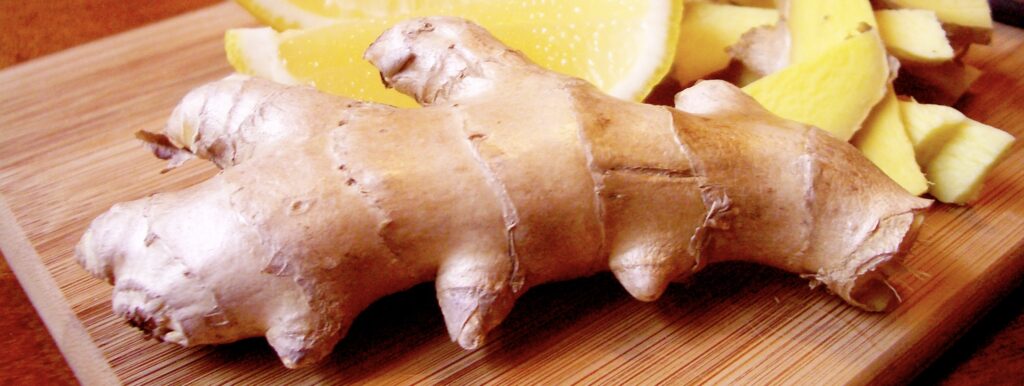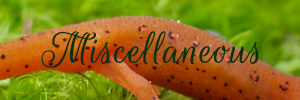
As anyone with kids knows, stomach bugs can be the worst of everyday infections to afflict a household. While “bad bellies” are more common in children – with developing immune systems, impossible hygiene, and play date germs shares – no age group is immune. Yet some people seem to have stomachs of steel, emerging from outbreaks unscathed or minimally inconvenienced. Getting to know some of your herbal allies can help put you among these lucky few…
What’s Bugging You?
The “stomach flu” isn’t actually caused by the same influenza virus responsible for the regular flu. In fact, a range of infectious organisms could be to blame for stomach bugs, diarrhea, nausea, and vomiting alongside fever, aches, and fatigue. These bugs tend to sweep through a home quickly. The traditional “stomach bug” is often caused by the Norovirus in adults or Rotovirus in children, spreading from fecal(or vomit)-to-oral contact. However, food poisoning can also be to blame, thanks to food tainted with Salmonella, E. coli, Campylobacter, Listeria, Clostridium, or even norovirus.
Prevention & Strengthening the Gut
First and foremost, practice good hygiene. Wash hands regularly and thoroughly after handling raw food, going to the bathroom, or helping others who are sick (including changing diapers). Avoid eating questionable food, cook meat to the recommended temperatures, and wash raw fruits and vegetables thoroughly. Greens and strawberries can be problematic grow so close to the ground. However, as we saw with the Salmonella outbreak from peanut butter (from unsanitary factory conditions), pathogens could be anywhere. We can’t always prevent exposure. Lucky for those of us with a love of herbs and natural remedies, we have more tricks up our sleeve than hand washing.
Beneficial bacterial colonize a healthy gut and make it less hospitable to other infections. Poor diet, stress, antibiotic use, and lack of fiber discourages these good guys from thriving. Probiotic supplements help recolonize the gut to discourage infections and are safe for almost anyone, any time. Look for a product with a special coating to help it release in the intestines, at least 1 billion live bacteria, and a mix of Lactobacillus and Bifidobacterium strains. Unrefrigerated blister packs are handy for travel in third-world countries. I find supplements to be most potent, but eating fermented foods daily is also ideal: Try kimchi, true sauerkraut, kefir, yogurt, and miso.
One of our first lines of defense is the stomach, which should be full of strong acid that helps kill pathogens while helping us digest our food. Unfortunately, most Americans have weak stomachs and low acid due to stress, poor diet, and rampant use of acid-reducing reflux medications. Besides eating a whole foods diet, consider boosting your digestive strength with a bitters tonic. These formulas are available in the digestive section of most stores and are made by many herbalists. Key bitter herbs include artichoke leaf (Cynara scolymus), turmeric (Curcuma longa), ginger (Zingiber officinale), orange peel (Citrus spp), dandelion leaf and root (Taraxacum officinale), and schizandra berry (Schisandra chinensis), and they’re often combined with warming spices to enhance their action and flavor. Just a few squirts in water or sprayed on the tongue before meals will slowly increase stomach acid and digestive enzyme production. Raw apple cider vinegar has a somewhat similar action. Cultural cuisine often incorporates bitters into mealtime, for example starting with a bitter green salad or adding tamarind to Indian food.
Antimicrobial herbs and spices discourage pathogens while also boosting digestion. Some like rose petals and ginger root have the unique ability to foster good bacteria while killing pathogens. Other useful digestive antimicrobial herbs include ginger, cinnamon (Cinnamomum spp), oregano (Origanum vulgare), bee balm (Monarda spp), thyme (Thymus vulgaris), garlic (Allium sativum), horseradish (Armoracia rusticana), and wasabi (Wasabia japonica). Take a cue from world cuisine and include these herbs in or alongside your food as much as possible. Eat pickled ginger and wasabi alongside sushi, Enjoy heavily spiced curries, and plenty of Italian seasoning in your Mediterranean dishes. You can also take them as capsules or tea, particularly if you anticipate germ exposure because you’re traveling or are surrounded by others who are sick. While less researched for stomach bugs, taking a few hits of echinacea tincture or elderberry syrup to keep your immune system function sharp under pressure can’t hurt, either.
Acute Care
We can’t prevent an infection, though, so if you find yourself sitting on the toilet with a bucket in front of you, bring the herbal therapies up a notch.
First and foremost, hydration and electrolytes. The most dangerous aspect of stomach bugs is dehydration and related electrolyte imbalance. You can opt for store-bought electrolyte drinks or turn to homemade recipes such as bone-broth, vegetable broth, or miso soup. Add a pinch of salt if it’s not already included. Also be super vigilant about hygiene: hand washing, cleaning doorknobs and phones, etc. Keep up or start the probiotics and small amounts of fermented foods.
Drink a couple cups of strong antimicrobial tea each day. Ginger, rose petals (Rosa spp), cinnamon, oregano, or bee balm are personal favorites. Don’t be afraid to add honey.
Our best herbal arsenal against stomach bugs, particularly the Norovirus and Rotovirus, are astringent, high-tannin plants. They help prevent the bugs from binding to receptor sites and spreading and also have direct antimicrobial action. They also tighten and tone the GI tract to ease diarrhea. (That said, the initial 24 hours or so of diarrhea may be crucial to help eliminate the pathogen.) Classic high-tannin plants for GI infections include cinnamon, Potentilla species, oak bark or leaves (Quercus spp), blackberry root (Rubus fruticosus), rose petals, and/or pine needles (Pinus strobus). Carob powder (Ceratonia siliqua) or carob “chocolate” bars may also be useful. Another well-researched herbal compound is berberine, a potent antimicrobial alkaloid found in goldenseal (Hydrastis canadensis), barberry (Berberis vulgaris), Oregon grape root (Mahonia spp), and Coptis species. This is often taken as a capsule but is also available as an herbal tincture. Be aware that berberine and berberine-rich plants are quite bitter tasting (not palatable as tea) and stain everything yellow.
Convalescence
The worst of an infection may be over, but it’s important to help your gut heal and discourage future infections. Stay hydrated and continue with smaller doses of our astringent and antimicrobial herbs. Don’t underestimate the classic BRAT diet of bananas, rice, applesauce, and toast, and you can certainly add useful herbs like cinnamon powder mixed into applesauce or sprinkled into mashed, cooked bananas. This can help staunch any residual diarrhea after the initial infection has passed. Continue with the probiotics and fermented foods as well, particularly if antibiotic meds were involved with your treatment plan. Sip on teas with soothing, gut-healing herbs such as licorice root (Glycyrrhiza glabra), slippery elm bark (Ulmus rubra), marshmallow root (Althaea officinalis), rose petals, and/or raspberry leaves (Rubus idaeus).
When to See the Doctor
Even though stomach bugs are among the most common infections in the country, they can quickly become serious or even deadly. If you’re pregnant, elderly, or have chronic illness, or if the infected is very young, check in with your doctor from the beginning. The biggest danger of a stomach bug is dehydration due to incessant diarrhea and/or vomiting, which can cause long-term issues like kidney damage or death. If dehydration signs are setting in, you can’t replace fluids faster than you’re losing them, or the infection isn’t starting to clear within 24 to 48 hours, get to the hospital immediately. Recalcitrant bugs may also pose issues and cause long-term damage. If GI symptoms persist, check in with the doctor to determine the cause of infection. Medical treatment for a bacteria or parasite may be necessary.
Kids vs Adults
Consult a qualified practitioner before giving herbs to infants and focus primarily on hydration and electrolytes. For older children and adults, herbal therapies are basically the same; however, you would use smaller doses for children, based on body weight. Also be more cautious with stronger herbs like oak and berberine. Opt primarily for food-like herbs such as cinnamon, ginger, oregano, and roses – starting with low doses, working your way up – and the BRAT diet. Be aware that dehydration risk is greater in children. When in doubt, call your doctor.
Clinical herbalist Maria Noël Groves sees clients and teaches classes at Wintergreen Botanicals Herbal Clinic & Education Center in Chichester, New Hampshire.
The statements made on this blog have not been evaluated by the FDA and are not intended to diagnose, prescribe, recommend, treat, cure, or offer medical advice. Please see your health care practitioner for help regarding choices and to avoid herb-drug interactions.
The article originally appeared in Herb Quarterly magazine in fall 2014.








